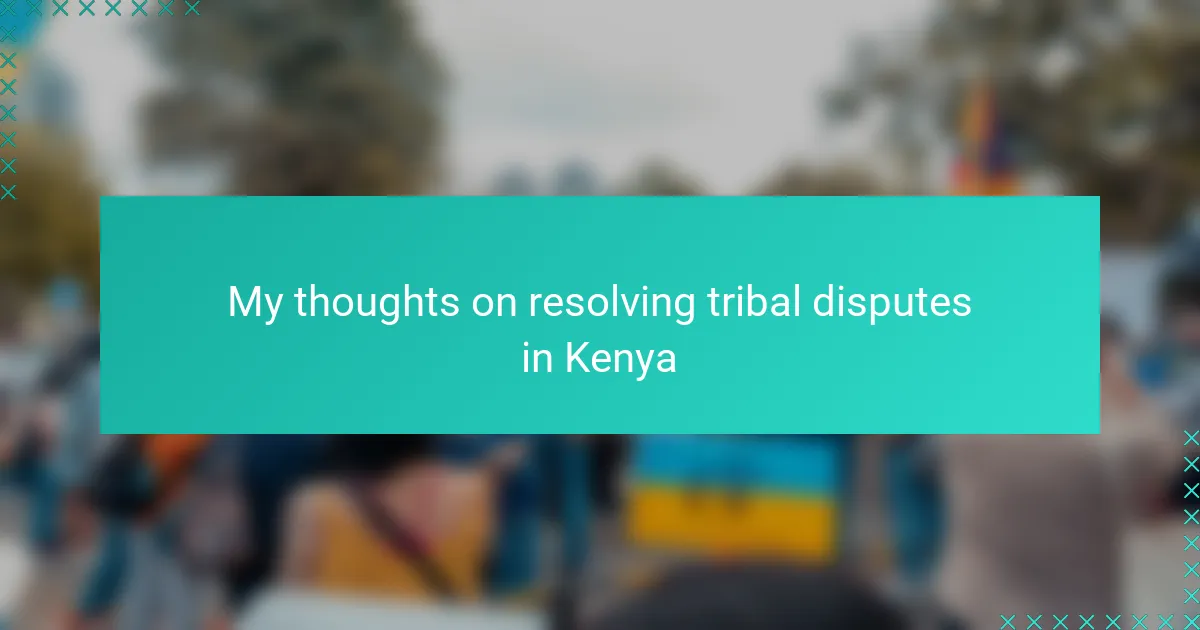Key takeaways
- Tribal disputes in Kenya stem from deep-rooted issues of identity, historical grievances, and competition over land, transcending mere territorial conflicts.
- Effective resolution strategies include open dialogue, inclusive political representation, and addressing historical injustices through truth-telling and restorative practices.
- The role of government and community leaders is crucial; genuine engagement can foster trust and create an environment conducive to reconciliation.
- Involving youth in peace initiatives is essential for building a sustainable future and breaking the cycles of conflict.
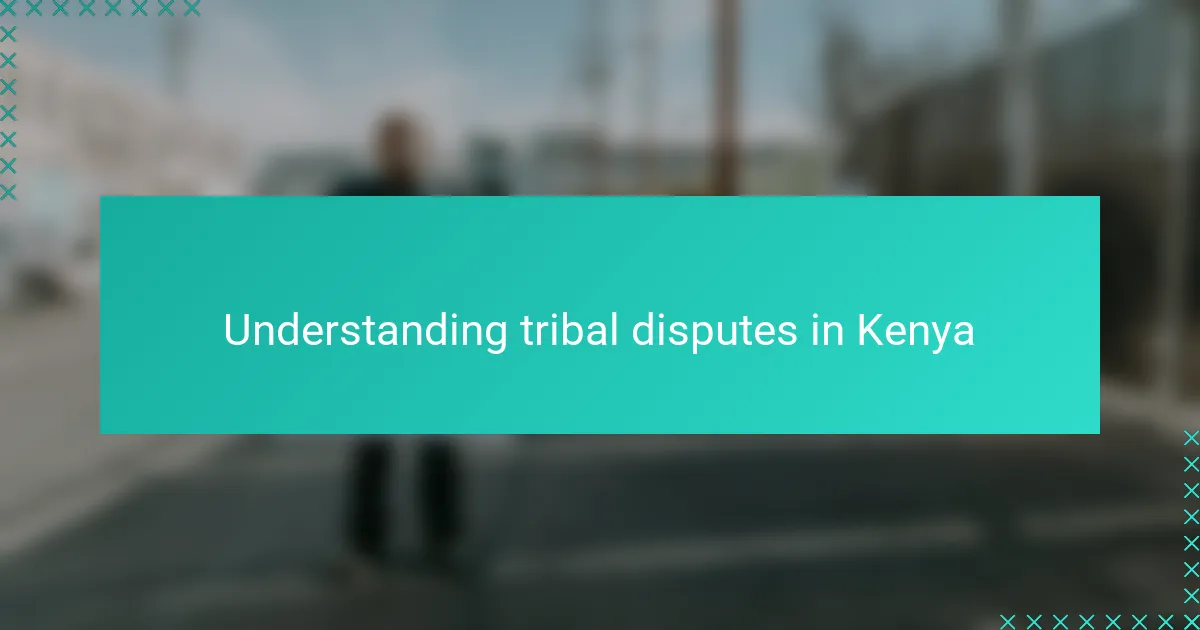
Understanding tribal disputes in Kenya
Tribal disputes in Kenya run deeper than just disagreements over land or resources. Having lived in different regions, I’ve seen how identity and history intertwine, making these conflicts intensely personal. When communities compete over ancestral land, it’s not just about territory—it’s about survival, pride, and legacy.
I often wonder, why do these disputes persist despite numerous peace efforts? In my experience, it’s because addressing the surface issues overlooks underlying fears and mistrust that have built up over decades. People carry the weight of old grievances, and without acknowledging those emotions, true reconciliation feels impossible.
What strikes me most is how these disputes ripple beyond immediate parties, affecting entire generations. I’ve witnessed families torn apart and children growing up in fear, which makes the need to understand these conflicts on a human level all the more urgent. Only then can we hope to find solutions that honor both the past and the future.
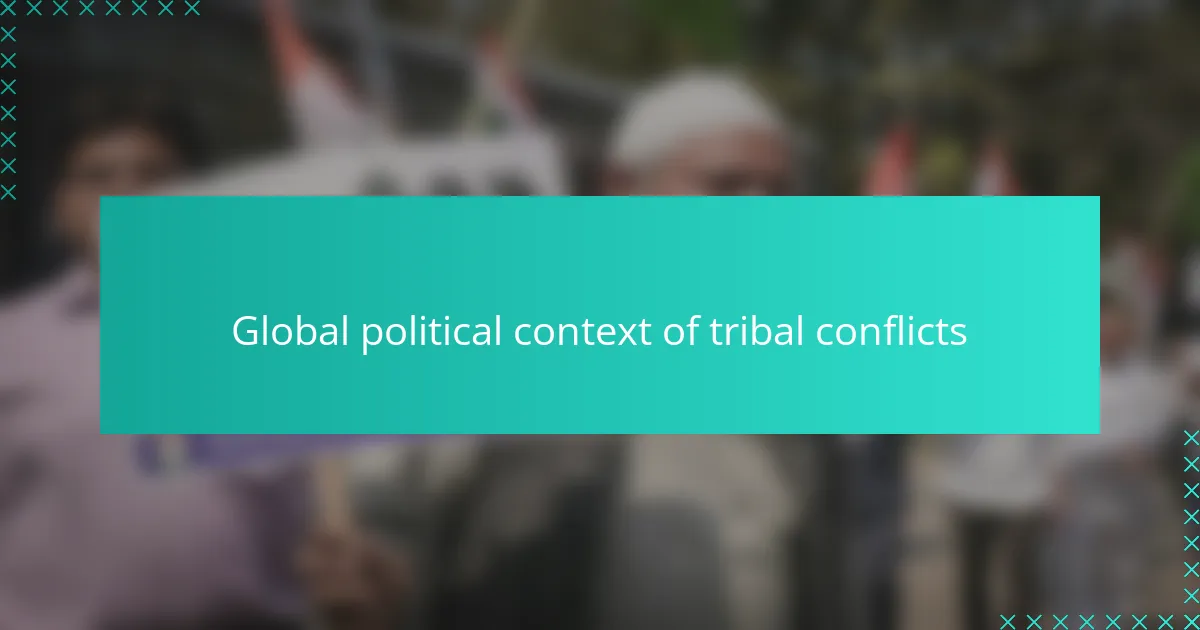
Global political context of tribal conflicts
Looking at tribal conflicts through a global political lens, I see patterns that feel both familiar and frustrating. Around the world, similar disputes often arise where identity politics intersect with weak state institutions, creating fertile ground for tension and violence. Have you ever noticed how colonial histories frequently set the stage for these struggles by imposing artificial borders and divisions? I have, and it always makes me question how much these external forces have shaped the narratives communities tell about themselves.
What surprises me is how international actors sometimes approach these conflicts with a one-size-fits-all mindset, ignoring local nuances and emotional depths. From my experience, peacebuilding efforts that don’t tap into the lived realities of the people involved often falter. It’s as if the global political community sees these disputes as problems to be managed rather than wounds needing healing.
At the same time, I can’t help but think about the role globalization plays in either amplifying or alleviating tribal conflicts. On one hand, global interconnectedness can introduce new resources and dialogue platforms; on the other, it sometimes deepens divisions by bolstering ethnic nationalism under the guise of self-determination. Have you encountered stories where outside influence shifted the trajectory of local conflicts? I have, and it reminds me how delicate and complex these situations truly are.
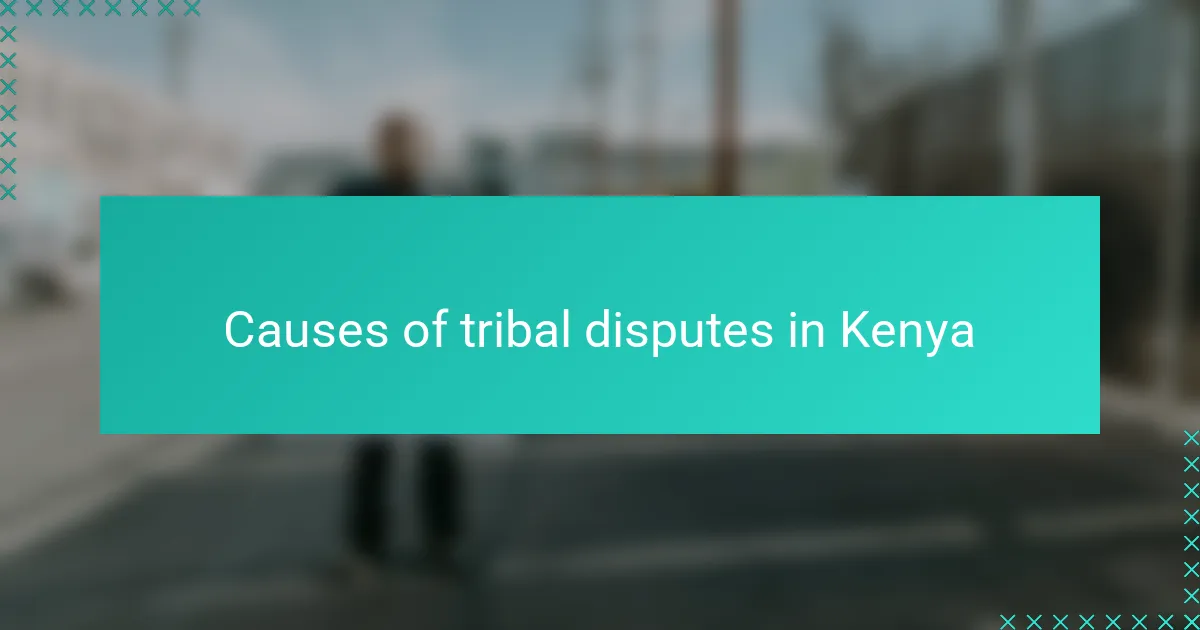
Causes of tribal disputes in Kenya
One of the causes that stands out to me in Kenya’s tribal disputes is competition over land. I’ve seen firsthand how land is not just a resource but a symbol of identity and belonging. When I’ve spoken with people from different communities, they often describe land as the heartbeat of their heritage—so when it’s threatened, emotions run deep and conflicts ignite.
Another factor that comes to mind is political manipulation. Over time, I’ve noticed how some leaders exploit tribal affiliations to gain power, turning differences into weapons. It makes me ask: How can peace take root when trust is so easily undermined by those who should be uniting citizens rather than dividing them?
I also believe historical grievances play a huge role. The echoes of past injustices aren’t easily silenced—they linger in stories passed down through generations. From what I’ve observed, these unresolved wounds fuel a cycle of suspicion and retaliation that is hard to break without sincere acknowledgment and healing.
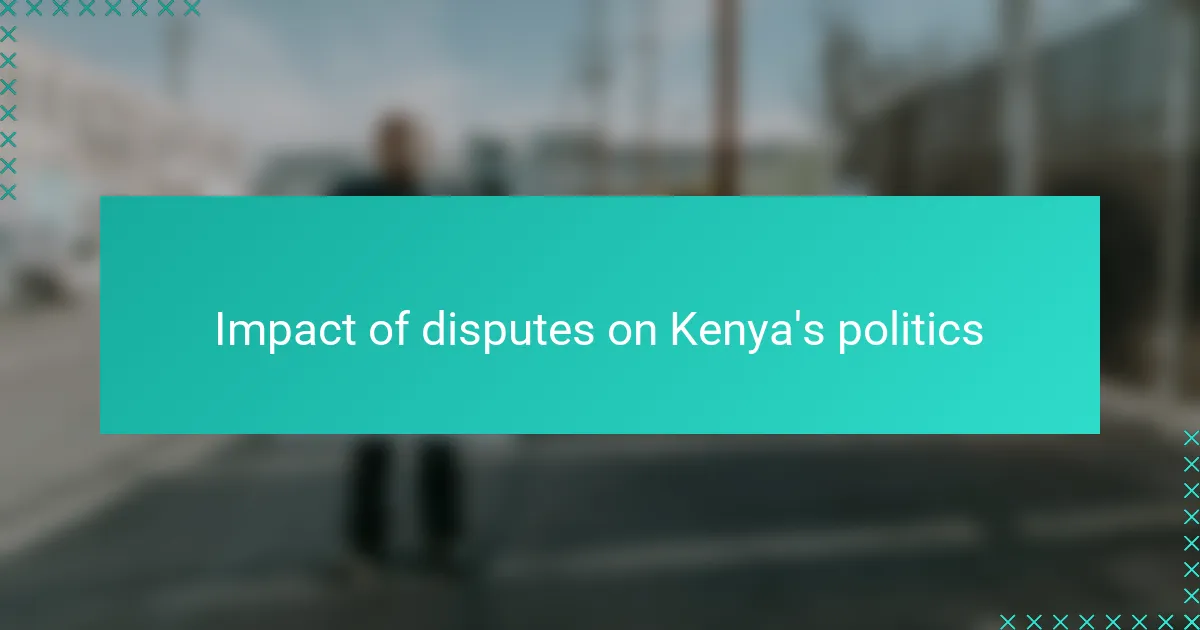
Impact of disputes on Kenya’s politics
Tribal disputes have a profound impact on Kenya’s political landscape, often turning elections into battles along ethnic lines rather than issues of policy or vision. From what I’ve witnessed, this dynamic erodes trust in political institutions and fuels cycles of tension every election season. It makes me wonder: how can democracy thrive when loyalty is too often demanded based on tribe instead of ideas?
I’ve also seen how these conflicts give opportunistic politicians a foothold to manipulate grievances for personal gain, deepening divides rather than fostering unity. It’s frustrating because instead of bridging communities, politics becomes a mirror reflecting historical wounds and mistrust. Have you noticed how peace efforts sometimes falter when leaders stoke tribal fears instead of calming them?
Moreover, the persistent tribal disputes shape Kenya’s political narrative, making national cohesion difficult to achieve. The stories I’ve heard from everyday citizens reveal a weariness born from repeated cycles of conflict and political rhetoric that rarely addresses the root causes. Can lasting political stability ever be possible without confronting the emotional and historical layers embedded in these disputes? I don’t think so.
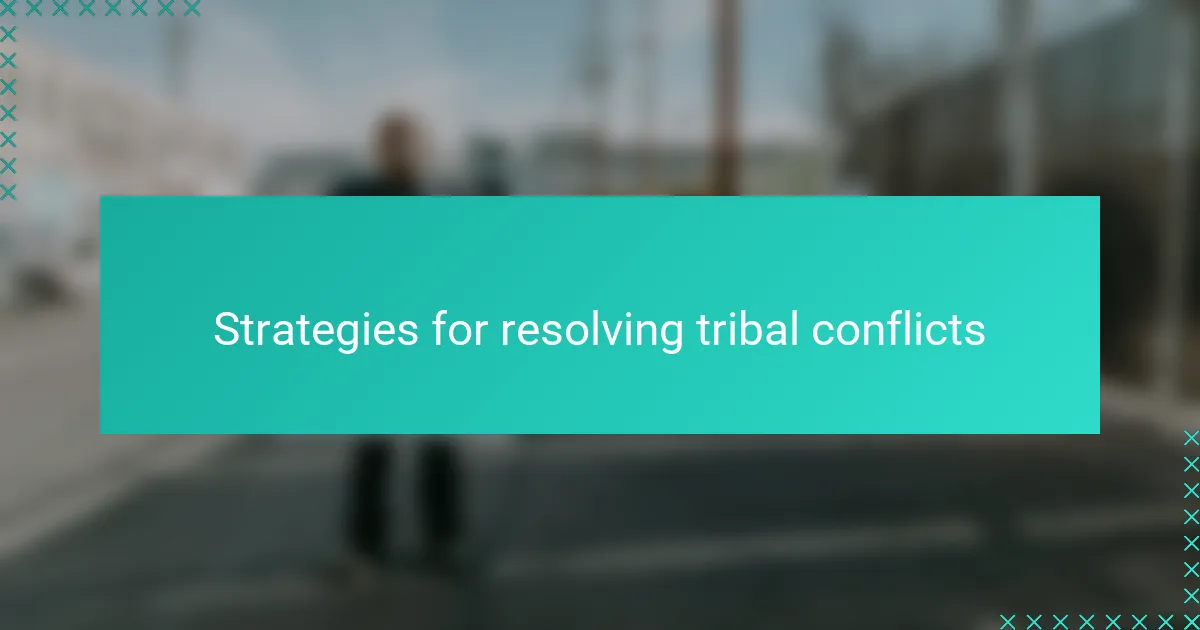
Strategies for resolving tribal conflicts
When I think about effective strategies for resolving tribal conflicts, dialogue stands out as a crucial starting point. I’ve seen that when communities come together—not just politicians or elders but ordinary people—they begin to understand each other’s fears and hopes. Do you know what’s powerful? Simply sharing stories can break down barriers that seemed unmovable.
Another approach I’ve found essential is fostering inclusive political representation. It’s frustrating how often tribal interests get sidelined or manipulated. From my experience, when all groups feel genuinely heard and involved in decision-making, there’s less room for resentment. I ask myself, how can peace last if people don’t see themselves in the system?
Finally, I believe healing historical wounds through truth-telling and restorative justice is indispensable. I remember attending a community meeting where acknowledging past harms opened the door for forgiveness and collaboration. Isn’t it interesting how facing painful truths, though difficult, can actually create space for hope and renewal? Without that, I don’t think reconciliation can truly take root.
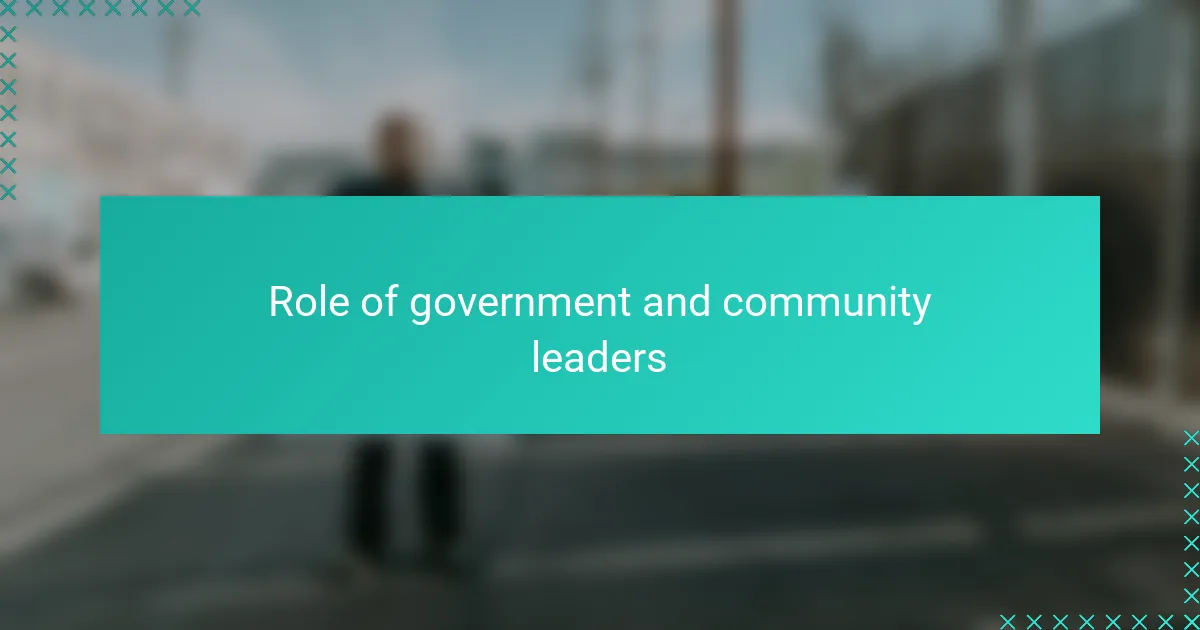
Role of government and community leaders
The government and community leaders hold a unique responsibility in bridging the gaps that fuel tribal disputes. From what I’ve observed, when leaders actively listen to local concerns rather than imposing top-down solutions, communities begin to feel valued and respected. Have you ever seen a scenario where leaders engage sincerely? In those moments, the atmosphere shifts from suspicion to cautious hope.
However, I’ve also noticed too often that some leaders might unintentionally deepen divisions by prioritizing political gain over genuine reconciliation. It’s a frustrating dynamic—how can you unite people if those in power benefit from their separation? This tension makes me think about the kind of leadership that’s truly needed: one rooted in courage, empathy, and long-term vision.
Community leaders, in particular, have my admiration because they live daily with these realities and can influence peace in tangible ways. I remember attending a local peace forum where a respected elder’s calm words defused a tense standoff between rival groups. It reminded me how crucial these grassroots voices are in transforming conflict into dialogue, beyond the grand speeches and official declarations. Can formal politics learn from this kind of authentic leadership? I believe it must.
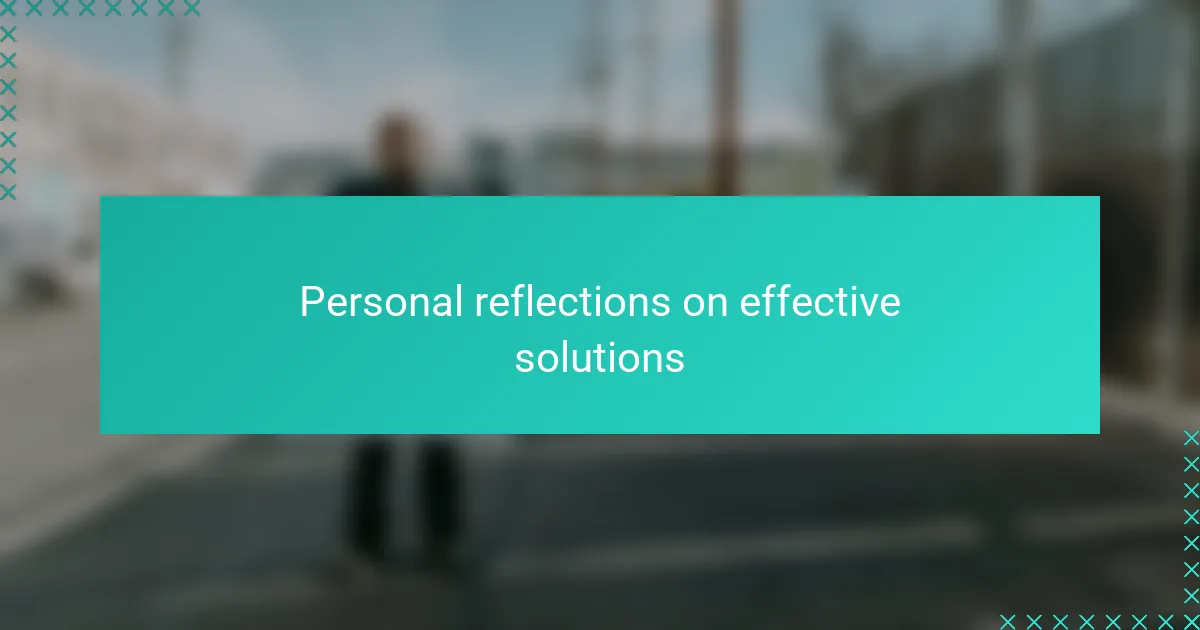
Personal reflections on effective solutions
I’ve often reflected on how patience and genuine listening form the backbone of any effective solution. When people feel heard—not just by officials but by each other—the walls of mistrust start to crumble. Have you ever experienced that moment when dialogue shifts from argument to understanding? That shift, I believe, is where real change begins.
From my experience, solutions that ignore the emotional scars of the past rarely hold. It’s like trying to build on shaky ground; without addressing those deep pains through truth-telling and restorative practices, peace remains fragile. I remember attending a reconciliation circle where sharing painful stories opened unexpected doors to forgiveness—it was a powerful reminder that healing is a collective journey, not a one-time event.
I also think involving the youth is critical, yet too often overlooked. Having seen young people energized by inclusive peace programs, I ask myself: how can a lasting solution emerge if the next generation feels alienated from the process? Their voices carry the hope for breaking cycles of conflict, so effective strategies must create space for their active participation.
